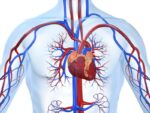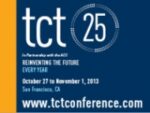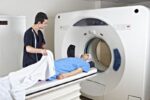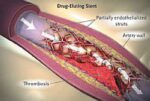Original title: Bivalirudin Started during Emergency Transport for Primary PCI. Reference: Philippe G. Steg, et;al. NEJM 2013; Octubre 30:1-11 Primary PCI is the preferred treatment for AMI within the first 12 hours of symptom onset and outcomes have been improving with the incorporation of new strategies and technology. This study randomized 2218 STEMI patients started with bivalirudin during<a href="https://solaci.org/en/2013/11/05/n-3928/" title="Read more" >...</a>
The largest series of post TAVI coronary occlusion published
Original title: Predictive Factors, Management and Clinical Outcomes of Coronary obstruction Following Transcatheter Aortic Valve Implantation Insight From a Large Multicenter Registry Reference: Henrique B. Ribeiro, et; al. J Am Coll Cardiology 2013;62:1552-62 Percutaneous implantation of the aortic valve is a valid strategy in high-risk surgical patients. One of the possible complications of this procedure is the occlusion<a href="https://solaci.org/en/2013/10/29/n-3872/" title="Read more" >...</a>
TCT 2013.
The full coverage of TCT 2013, that takes place in San Francisco City from October 27th to November 1st . Partnership Session: Optimizing PCI Outcomes: SOLACI in Partnership with TCT Date: Monday, October 28 6:00 pm – 8:00 pm Room: Moscone West, 3rd Floor, Room 3010 Moderators: Martin B. Leon, Jamil Abdalla Saad, Gregg W. StoneDiscussants: Jorge Gaspar,<a href="https://solaci.org/en/2013/10/28/congress-6230/" title="Read more" >...</a>
Primary angioplasty , a race against time
Original title: Door-to-Balloon Time and Mortality among Patients Undergoing Primary PCI. Reference: Daniel S. Menees et al. N Engl J Med 2013;369:901-9. For more than a decade has been ranked , like a race, to the delay times that occur in hospitals until angioplasty is performed in the context of an infarct with ST segment elevation . Several<a href="https://solaci.org/en/2013/09/13/n-3606/" title="Read more" >...</a>
Intravascular imaging for event prediction: looking beyond the lumen.
Original title: Thinking Out of the Lumen: FFR Vs. Intravascular Imaging for MACE Prediction. Reference: Pedro R. Moreno et al. J Am Coll Cardiol, article in press. Intravascular imaging studies have shown that the lesions most likely to produce coronary events usually have modest luminal stenosis, large cap burden and thin fibrous cap. These plaques will evolve into a<a href="https://solaci.org/en/2013/09/05/n-3578/" title="Read more" >...</a>
Full conversion from transfemoral to transradial: similar success rate and far less complications.
Original title: Full conversion from transfemoral to transradial approach for percutaneous coronary interventions results in a similar success rate and a rapid reduction of in-hospital cardiac and vascular major events. Reference: Vincent Dangoisse et al. EuroIntervention 2013;9:345-352. Although the transfemoral approach has clear disadvantages when it comes to bleeding complications, it continues to be the preferred approach<a href="https://solaci.org/en/2013/08/21/n-3536/" title="Read more" >...</a>
Multislice computed tomography for bioresorbable scaffolds: the end of invasive diagnostic studies?
Original title: Multislice Computed Tomography Angiography for Non-invasive Assessment of the 18-Months Performance of a Novel Radiolucent Bioresorbable Vascular Scaffolding Device (ABSORB Trial). Reference: Koen Nieman et al. J Am Coll Cardiol, article in press. Metal stents revolutionized coronary angioplasty procedures; however, they are permanent prosthetic devices that make re intervention difficult and prolongue thrombosis risk. This problem<a href="https://solaci.org/en/2013/08/14/n-3515/" title="Read more" >...</a>
Transradial Angioplasty: do we need more proof to adopt it for good?
Original title: Influence of Arterial Access Site Selection on Outcomes in Primary Percutaneous Coronary Intervention. Are the Results of Randomized Trials Achievable in Clinical Practice? Reference: Mamas A. Mamas et al. J Am Coll Cardiol Intv 2013. Article in press. Antithrombotic therapy has improved the prognosis of patients with acute ST-segment elevation myocardial infarction by reducing ischemic events.<a href="https://solaci.org/en/2013/06/25/n-3361/" title="Read more" >...</a>
Adenosine, the best vasodilator to improve blood flow in primary angioplasty
Original title: Open Label, Randomized, Placebo-Controlled Evaluation of Intracoronary Adenosine or Nitroprusside Alter Thrombus Aspiration During Primary Percutaneous Coronary Intervention for the Prevention of Microvascular Obstruction in Acute Myocardial Infartion . The Reopen-AMI Study Reference: Giampaolo Niccoli, et al. J Am Coll Cardiol Intv 2013. Article in Press One of the challenges of PCI is to achieve the<a href="https://solaci.org/en/2013/06/13/n-2640/" title="Read more" >...</a>
Stent Thrombosis in the Real World
Original title: Incidence and predictors of stent trombosis: a single-centre study of 5833 consecutive patients undergoing coronary artery stenting Reference: Javaid Iqbal et al. EuroInterventional 2013;9:62-69 Though potentially fatal, stent thrombosis is a low frequency event associated to stent malapposition, fractures, resistance to antiplatelet therapies, and diseases such as diabetes and kidney disease, among other factors. 5883 pacients<a href="https://solaci.org/en/2013/05/31/n-2773/" title="Read more" >...</a>









